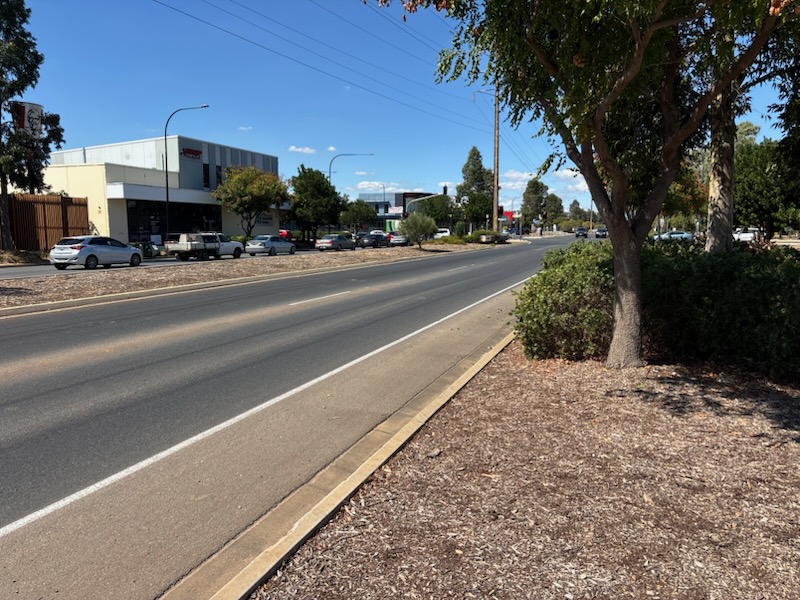Durable Roads for Spence’s Future

Preamble
The federal electorate of Spence—spanning the City of Playford, Town of Gawler, and parts of the City of Salisbury from Paralowie to Willaston and Yattalunga to St Kilda—serves 140,000 residents (ABS, 2021) with roads critical to commuting, freight, and daily life. As of March 16, 2025, these roads, including Curtis Road, Dalkeith Road, Main North Road, and Kings Road, falter under wear, outdated materials, and insufficient federal backing.
This policy mandates federal assistance to state and councils, funds a $150 million+ Curtis Road upgrade while addressing other arterials, invests in R&D for durability, and plans for growth to 160,000 by 2035. By redirecting waste, we’ll build a long-term, fit-for-purpose network—done right the first time—saving Spence residents time and money without tax hikes.
Current Issues and the Need for Federal Assistance
- Maintenance Strain Across Councils:
- Playford: Manages 1,200 km (Playford Council, 2023), including Curtis Road and Main North Road. Its $40 million budget faces a $100 million backlog (SA Infrastructure Report, 2022). Curtis Road’s industrial traffic (20% freight, DPTI) and Main North Road’s 50,000 daily vehicles (DPTI, 2023) need urgent upgrades.
- Gawler: Oversees 300 km (Town of Gawler, 2023), like Dalkeith Road and Gawler East Link. With $10 million annually, growing Willaston commuter routes demand capacity.
- Salisbury: Covers 600 km in Spence (Salisbury Council, 2023), including Kings Road from Paralowie to St Kilda. Its $15 million budget struggles with congestion ($200 million cost, Infrastructure SA, scaled).
- Short Lifespan: Spence’s asphalt lasts 15–20 years (Austroads), cracking under 40°C heat and heavy loads. Repairs cost $50–$60 million yearly (scaled from SA’s $300 million, ABS, 2023-24).
- Transportation Needs: Curtis Road’s upgrade, projected at $150 million+ (DPTI planning, 2025), addresses freight and safety. Dalkeith Road’s intersection with Stebonheath Road—a $2 million Black Spot fix (minister.infrastructure.gov.au, 2023)—and arterials like Main North and Kings Roads need durability for 160,000 residents (SA Government, 2035 projection).
Past 10 Years: Successes, Failings, and Investments in Spence
- Investments (2015–2025):
- New Growth: Federal and SA spending averaged $100–$150 million yearly (DPTI), with $400 million on Playford’s Northern Connector (2019) and $260 million on Gawler’s East Link Road (2022). Salisbury’s Kings Road got $50 million (SA Budget 2024-25).
- Repairs: Playford spent $50–$70 million, Gawler $20–$30 million, and Salisbury $30–$40 million (DPTI estimates), including $10 million on Womma Road (2022-23).
- Successes:
- Northern Connector cut Playford freight times by 15% (DPTI, 2023), supporting $500 million in exports (PIRSA, 2023-24).
- Gawler East Link reduced crashes by 10% (SA Police, 2022).
- Salisbury’s Kings Road patches eased Paralowie traffic by 5% (DPTI).
- Failings:
- Short-Term Focus: 60% of funds went to repairs (DPTI), not durability—Main North Road’s asphalt needs $20 million fixes every decade (SA estimates).
- R&D Neglect: Spence saw minimal R&D funding (Austroads), sticking with 15-year asphalt unfit for Curtis Road’s trucks or Dalkeith’s commuters.
- Cost Overruns: $5–$10 million wasted yearly (Infrastructure SA), with Northern Connector delays adding 5% to costs (X trends).
Policy Vision: Durable Roads, Right First Time
We propose federal leadership to transform Spence’s roads:
- Federal Assistance to Playford, Gawler, and Salisbury:
- Matching Grants: Federal government matches Playford’s $20 million, Gawler’s $10 million, and Salisbury’s $15 million, adding $45 million annually, with best-case federal support doubling to $90 million/year.
- Spence Road Taskforce: A $5 million/year body to prioritize Curtis Road ($150 million+), Dalkeith Road, Main North Road, and Kings Road.
- Fund the Curtis Road Upgrade and Other Arterials:
- Curtis Road: Projected at $150 million+ (DPTI, 2025) for freight and safety upgrades from Elizabeth to Munno Para. Fund $75 million from federal waste redirection, $75 million via state/federal 50:50 split over five years ($15 million/year each).
- Dalkeith Road: Retrofit with $10 million (post-Black Spot roundabout) for durability, split 50:50 federal-state.
- Main North and Kings Roads: Allocate $50 million each over 10 years ($5 million/year) for retrofits, funded via federal grants.
- Invest in R&D for Longevity:
- Research Avenues: Fund $50 million over five years in:
- Polymer-modified asphalt (25-year lifespan) for Curtis Road’s freight.
- Rubberized concrete (40-year lifespan) for Main North Road’s traffic.
- Flood-resistant sealants for Kings Road’s lowlands.
- Partners: UniSA, DPTI, and councils target 30–50-year roads.
- Research Avenues: Fund $50 million over five years in:
- Common-Sense Approach:
- Right First Time: Mandate new roads and retrofits (e.g., Curtis, Dalkeith) use durable compounds, avoiding upgrades for 25 years. Retrofit 200 km by 2035.
- Fit for Purpose: Design for 160,000 people, 20% freight growth (DPTI), and council needs—Playford’s industry, Gawler’s commuters, Salisbury’s sprawl.
- Cut Wasteful Spending:
- End Foreign Aid Excess: Slash $3.2 billion from $4.2 billion national aid (Budget 2024-25), redirecting $100 million to Spence.
- Scrap Redundant Agencies: Abolish eSafety Commission ($12 million/year) and cut 25% of APS upper management (5,000 roles, $750 million–$1 billion).
- Total Savings: $4–$4.5 billion nationally, with $200 million for Spence.
Funding Sources and Projected Costs
- Funding Redirected: $200 million/year for Spence from national cuts ($4–$4.5 billion), plus $50 million from federal budgets (KPMG), totals $250 million annually—no tax hikes. Best-case federal boost adds $45 million/year ($90 million total grants).
- Projected Costs:
- Curtis Road: $150 million+ over five years ($30 million/year), split $15 million federal, $15 million state.
- Maintenance Support: $45 million/year (Playford $20M, Gawler $10M, Salisbury $15M), up to $90 million with best-case federal aid.
- R&D: $10 million/year ($50 million over five years).
- Other Retrofits (Dalkeith, Main North, Kings): $60 million/year for 10 years ($600 million total) for 200 km.
- Taskforce: $5 million/year.
- Total Annual Cost: $250 million (base), $295 million (best-case), within redirected funds plus federal boost.
- Long-Term Plan: $1.9–$2 billion over 10 years builds a 30–50-year network, saving $25 million yearly in repairs post-2035 (scaled from SA’s $150 million).
Cost Effectiveness and Population Growth
- Projected Need: With 160,000 by 2035 (SA Government) and NOM at 15,000 statewide (2023-24), Spence road demand rises 15% (DPTI). Current $150 million/year won’t suffice—$200–$250 million annually is needed without R&D (Infrastructure SA, scaled).
- Cost Effectiveness: Investing $250–$295 million/year now:
- Cuts repair costs by 50% ($25 million/year) by 2035.
- Boosts Spence GDP by $500 million annually (KPMG multiplier, 2,000 jobs).
- Avoids $500–$700 million in short-term upgrades.
- No Tax Rise: Redirected $200 million, plus up to $90 million federal aid, covers costs.
Why “Right First Time” Matters
- Current Failures: Short-term fixes—like $5 million on Womma Road (Playford, 2022)—waste funds on 15-year asphalt, needing rework by 2037
- Long-Term Savings: 30-year roads save $25 million annually post-2035, aiding Spence’s health (1:1,600 doctor ratio, OECD) or schools.
- Transportation Benefit: Durable Curtis Road supports freight (20% of traffic), Dalkeith Road eases Gawler commutes (15% of budgets, Finder), and Main North/Kings Roads cut congestion ($200 million, Infrastructure SA), boosting $500 million in exports (PIRSA).
Conclusion
Spence’s roads—Curtis, Dalkeith, Main North, and Kings—need federal action, not stopgaps. The past decade’s $400 million Northern Connector aided Playford, but short-term planning left arterials failing. Redirecting $200 million yearly from waste, plus up to $90 million in federal aid, we’ll fund Curtis Road’s $150 million+ upgrade, assist Playford, Gawler, and Salisbury, and build durable roads right the first time. This saves $25 million yearly, grows Spence’s economy, and prepares for 160,000 residents—tax-free.
![]()
